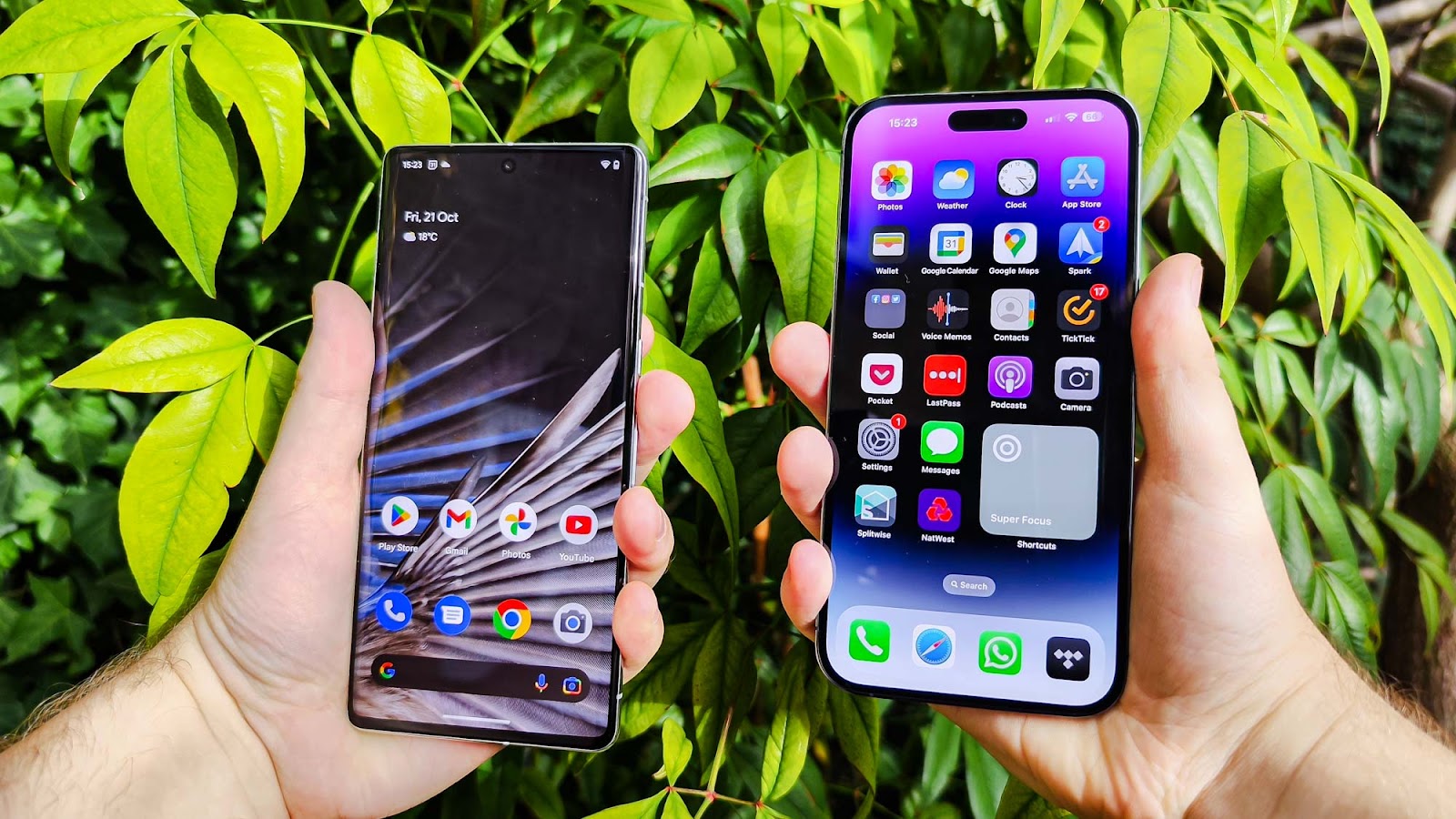What defines a premium smartphone experience? Is it the camera quality, processing power, or perhaps the operating system? In the battle between iOS and Android, two flagship devices stand out: the Apple iPhone 14 and the Google Pixel 7 Pro. Each offers unique features and capabilities that cater to different user preferences. This blog post will delve into a comprehensive comparison of these two smartphones, examining their design, camera performance, software experience, and overall value. Whether you’re an Apple aficionado or an Android enthusiast, understanding these differences can help you make an informed decision.
Design and Build Quality
The design of a smartphone often plays a crucial role in user experience, and both the iPhone 14 and Pixel 7 Pro have distinct aesthetics that appeal to different tastes. The iPhone 14 sports a sleek, minimalist design with a glass front and back, reinforced by a stainless steel frame, giving it a premium feel. Its dimensions are 147.5 x 71.5 x 7.8 mm, and it weighs 172 grams, making it comfortable to hold and use. The ceramic shield glass adds durability, while the IP68 rating ensures water and dust resistance.
In contrast, the Google Pixel 7 Pro features a slightly larger and heavier build, measuring 155.6 x 73.2 x 8.9 mm and weighing 212 grams. Its aluminum frame and Gorilla Glass Victus provide a sturdy construction, while the unique camera bar on the back adds a distinctive flair. The Pixel 7 Pro also boasts an IP68 rating, ensuring it can withstand the elements. Both devices come in various color options, allowing users to choose a style that suits their personality.
Ultimately, the choice between these two designs may come down to personal preference. The iPhone 14 appeals to those who prefer a classic, elegant look, while the Pixel 7 Pro attracts users who appreciate a more modern and unique design. Regardless of choice, both smartphones showcase exceptional craftsmanship and attention to detail.
Finding the Best Deals Online
The price of the iPhone 14 in Australia starts at AU$ 1041 and that of the Google Pixel 7 Pro at AU$ 731. Skyphonez is Australia’s leading eCommerce platform for buying new as well as refurbished smartphones, laptops, tablets, and other tech gadgets.
Skyphonez is committed to bringing the latest phones with incredible processing powers at the best market prices. This ensures you get the premium devices while saving money on every purchase.
Every purchase is backed by a 30-day money-back guarantee and free shipping across Australia. So, you can buy premium phones and gadgets in Australia risk-free.
Camera Performance
When it comes to photography, both the iPhone 14 and Pixel 7 Pro are equipped with impressive camera systems, but they excel in different areas. The iPhone 14 features a dual-camera setup with a 12 MP wide and a 12 MP ultra-wide lens, allowing for stunning photos in various lighting conditions. Its advanced computational photography capabilities enhance image quality, especially in low-light scenarios, making it a top choice for night photography.
On the other hand, the Pixel 7 Pro boasts a triple-camera system, including a 50 MP wide, 12 MP ultra-wide, and a 48 MP telephoto lens with 5x optical zoom. This setup provides versatility, particularly for users who enjoy capturing distant subjects or detailed close-ups. The Pixel’s software-driven photography excels in producing natural colour tones and sharp details, especially in well-lit environments.
Both smartphones deliver excellent video capabilities, with the iPhone 14 supporting 4K recording at up to 60 fps and the Pixel 7 Pro offering similar features. However, the iPhone’s cinematic mode allows for professional-looking shallow depth-of-field effects, which can be appealing to content creators.
In summary, if you prioritize low-light photography and video capabilities, the iPhone 14 may be the better option. However, if you value versatility and zoom capabilities, the Pixel 7 Pro stands out with its superior camera hardware.
Software Experience
The software experience is a significant factor in choosing between the iPhone 14 and Pixel 7 Pro. Apple’s iOS is known for its smooth performance, intuitive interface, and seamless integration with other Apple devices. The iPhone 14 runs on iOS 16, which offers features like Focus modes, customizable widgets, and a robust App Store with a wide range of applications. Regular updates ensure that users have access to the latest features and security improvements.
In contrast, the Pixel 7 Pro runs on Android 13, providing a more customizable experience. Google’s Material You design allows users to personalize their home screens and app icons, creating a unique look and feel. The Pixel’s integration with Google services, such as Assistant and Photos, enhances productivity and convenience. Additionally, the Pixel 7 Pro is often among the first devices to receive Android updates, ensuring users have access to new features and security patches.
While both operating systems have their strengths, the choice often comes down to user preference. If you prefer a straightforward, polished experience with strong app support, iOS may be the way to go. However, if you value customization and integration with Google services, the Pixel 7 Pro offers a compelling alternative.
Value for Money
Price is a critical consideration when comparing the iPhone 14 and Pixel 7 Pro. The iPhone 14 starts at around $799, while the Pixel 7 Pro is priced at approximately $899. While the Pixel 7 Pro is slightly more expensive, it offers features that may justify the cost for some users, such as its advanced camera system and larger display.
In terms of long-term value, the iPhone 14 typically enjoys a longer lifespan in terms of software updates and resale value. Apple supports its devices with updates for several years, ensuring that users can enjoy the latest features and security enhancements long after their purchase. This longevity can make the iPhone a more cost-effective choice in the long run.
Conversely, the Pixel 7 Pro offers excellent value for those who prioritize camera performance and the latest Android features. Its lower starting price compared to other flagship devices makes it an attractive option for budget-conscious consumers seeking high-end features.
Ultimately, the best choice depends on individual priorities, whether it’s camera capabilities, software experience, or long-term value. Both smartphones offer compelling features that can cater to different user needs.
Conclusion
The iPhone 14 and Google Pixel 7 Pro represent two of the best offerings in the smartphone market today, each with its unique strengths. The iPhone 14 excels in camera performance, software integration, and long-term support, making it an excellent choice for those who prioritize a seamless user experience. Meanwhile, the Pixel 7 Pro stands out with its impressive camera versatility, customization options, and competitive pricing. Choosing between these two devices ultimately comes down to personal preferences and priorities, ensuring that users can find the perfect smartphone to fit their lifestyle.





